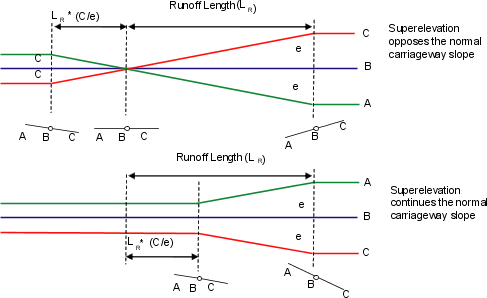This section describes situations for undivided roads and illustrates how superelevation is applied for each situation.
Single Crowned Carriageways
The following illustration shows an undivided road as a corridor type and a crowned cross section shape. During superelevation, the simple crowned carriageway undergoes adverse superelevation applied from Low channel. In this illustration, the adverse superelevation applied from Low channel is the distance from End Normal Crossfall to Reverse Crossfall:

Single Planar Carriageways
The following illustration shows an undivided road as the corridor type and the cross section shape is planar. There is no crown, therefore no removal of adverse crown is necessary. This type of carriageway typically has a downward slope in one direction on the unsuperelevated sections. Because of this, the distance required to achieve full superelevation varies depending on whether the superelevation continues in the direction of the downward slope or superelevates in the direction opposite to the normal downward slope. This example is typical of ramps, one-way traffic roads, and some service roads.
